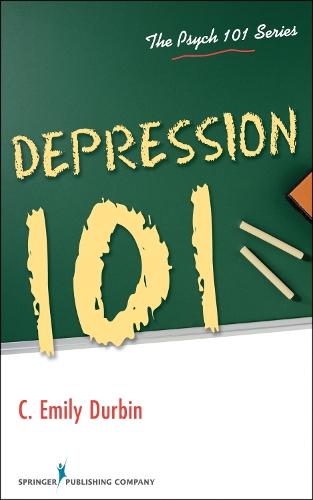Overview
""This latest installment in the Psych 101 series is a reader-friendly discussion of one of the most common mental health disorders -- depression. With the advent of the DSM-5, this book is not only timely, but it also provides a life-span approach to understanding depression.""--Doody's Medical Reviews Depression, often referred to as the ""common cold of psychopathology,"" is among the most prevalent psychiatric conditions, yet it remains challenging to understand and treat. Depression 101 provides a reader-friendly overview of unipolar and bilpolar depression and provides the most current and intriguing scientific knowledge on this topic. Unique in its transdisciplinary and lifespan approaches to depression, the text explicitly integrates models of depression across childhood, adolescence, and adulthood. Depression 101 establishes an organizational framework for understanding the multiple pathways that can lead to depression. It describes the fundamental distinctions between unipolar and bipolar disorders, and provides a model for understanding of mood disorders on a continuum of severity. The text illuminates how such major psychology disciplines as clinical, developmental, evolutionary, personality, and behavioral neuroscience shed light on the causes, risk factors, and treatment options for the full spectrum of depressive disorders. Cultural and gender as variables are examined as is depression across the lifespan. Additionally the text clarifies common misconceptions about depression and mood disorders, and considers how the recently-released DSM-5 affects diagnostic practice. Key Features: Provides an accessible reader-friendly overview of depression and related mood disorders Explores cutting edge research on psychology from across a wide range of psychological disciplines Takes a lifespan approach, viewing depression as it affects people at all ages of development Clarifies common misconceptions about depression and other mood disorders Reviews causes, risk factors, and treatment options for the full spectrum of depressive disorders Updated to reflect changes in diagnosis as provided in DSM-5
Full Product Details
Author: C. Emily Durbin ,
Emily Durbin
Publisher: Springer Publishing Co Inc
Imprint: Springer Publishing Co Inc
Dimensions:
Width: 12.70cm
, Height: 1.70cm
, Length: 20.30cm
Weight: 0.456kg
ISBN: 9780826171061
ISBN 10: 0826171060
Pages: 336
Publication Date: 06 December 2013
Audience:
Professional and scholarly
,
Professional & Vocational
Format: Paperback
Publisher's Status: Active
Availability: Available To Order

We have confirmation that this item is in stock with the supplier. It will be ordered in for you and dispatched immediately.
Author Information
Emily Durbin, PhD, is Associate Professor of Psychology at Michigan State University.




